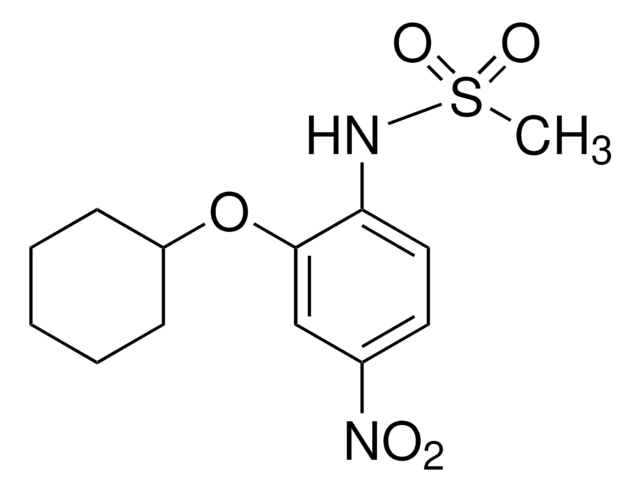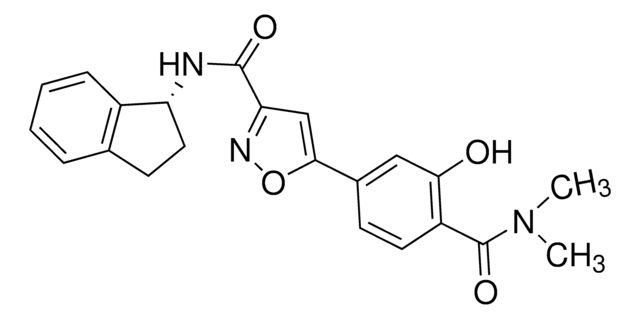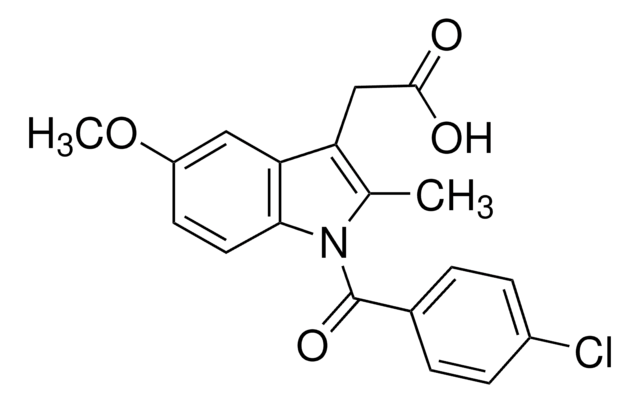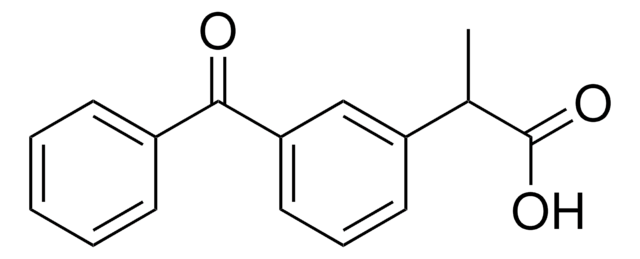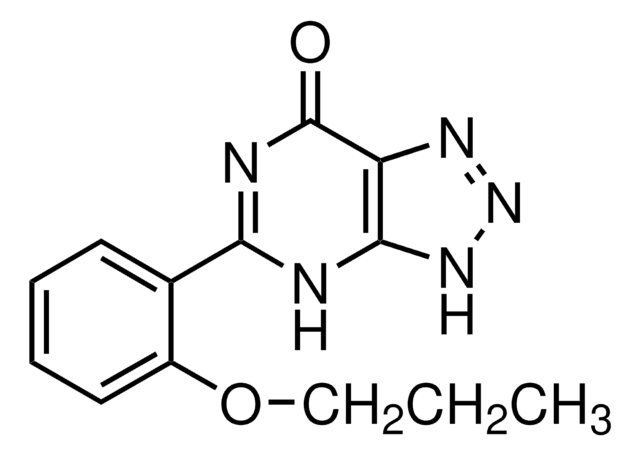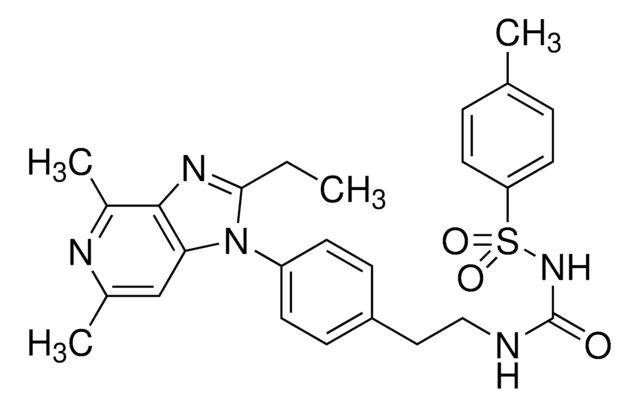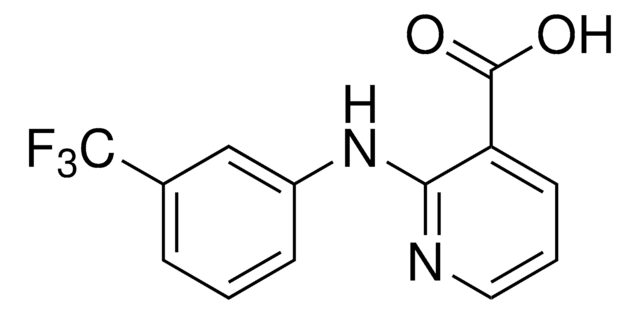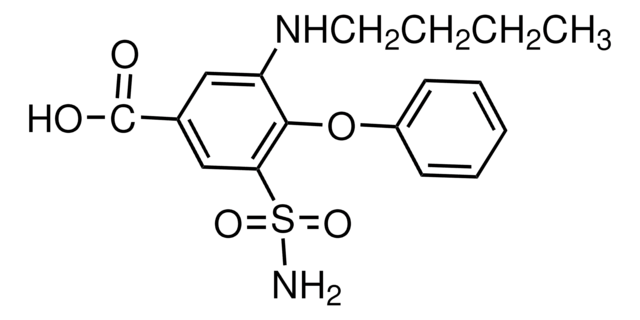S3065
SC 19220
≥98% (HPLC), solid
Sinónimos:
2-Acetylhydrazide 10(11H)-carboxylic acid, 8-Chloro-dibenz[b,f][1,4]oxazepine-10(11H)-carboxylic acid
About This Item
Productos recomendados
assay
≥98% (HPLC)
form
solid
color
white
mp
190-191 °C (lit.)
solubility
DMSO: soluble 10 mg/mL
H2O: insoluble
SMILES string
CC(=O)NNC(=O)N1Cc2ccccc2Oc3ccc(Cl)cc13
InChI
1S/C16H14ClN3O3/c1-10(21)18-19-16(22)20-9-11-4-2-3-5-14(11)23-15-7-6-12(17)8-13(15)20/h2-8H,9H2,1H3,(H,18,21)(H,19,22)
InChI key
KNURFLJTOUGOOQ-UHFFFAOYSA-N
Gene Information
human ... PTGER1(5731)
rat ... Ptger1(25637)
Application
Biochem/physiol Actions
Storage Class
11 - Combustible Solids
wgk_germany
WGK 3
flash_point_f
Not applicable
flash_point_c
Not applicable
ppe
Eyeshields, Gloves, type N95 (US)
Elija entre una de las versiones más recientes:
¿Ya tiene este producto?
Encuentre la documentación para los productos que ha comprado recientemente en la Biblioteca de documentos.
Nuestro equipo de científicos tiene experiencia en todas las áreas de investigación: Ciencias de la vida, Ciencia de los materiales, Síntesis química, Cromatografía, Analítica y muchas otras.
Póngase en contacto con el Servicio técnico